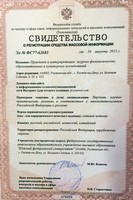
МИСТИЧЕСКАЯ ДИСТАНЦИЯ В МАЛОЙ ПРОЗЕ Д.Г. ЛОУРЕНСА: ДУХ МЕСТА И ПЕЙЗАЖИ СЕРДЦА
Аннотация
В статье использован юнгианский архетипический подход в анализе избранных произведений малой прозы Д.Г. Лоуренса (новеллы «Принцесса», «Сент- Мавр», «Уехавшая верхом», «Сбежавший петух» и некоторые рассказы), в которых таинственные характеристики места и расстояния/дистанции играют важную роль в повествовании, духовнопсихологическом развитии персонажей, процессе их индивидуации. Выделяются четыре типа мистической дистанции в малой прозе Д.Г. Лоуренса с акцентом на пространственном аспекте анализируемых новелл. В статье показано, что в каждом тексте в разной форме присутствует «дух места» в качестве юнгианских архетипов Духа, Тени, Анимы или Анимуса. Все персонажи проходят духовную трансформацию посредством своего квеста. Эта трансформация осуществляется по-разному, а дистанция, которую они преодолевают, отличается мистическими свойствами. Место служит физической дистанцией квеста персонажей, в то время как душевные движения раскрывают такие формы духовно-мистических аспектов, как Дух-Анимус, Дух-Тень, жертвоприношение и возрождение.
Ключевые слова: Д.Г. Лоуренс, Дух места, мистическая дистанция, архетип, квест, Тень, трансформация, Дух-Анимус, Дух-Тень.
DOI 10.18522/2415-8852-2021-4-42-63
Полный текст:
PDF (English)Литература
References
Balbert, P. (1989). Snake’s eye and obsidian knife: art, ideology, and “The Woman Who Rode Away”. In P. Balbert (Ed.), D.H. Lawrence and the phallic imagination: essays on sexual identity and feminist misreading. New York: St. Martin’s, 109–132.
Consiglio, M.C. (2013). Art and the spirit of place: D.H. Lawrence translates Giovanni Verga. Etudes Lawrenciennes, 44, 111–142.
Deggan, M. (2012). “Nowhere will now say a few words”: the aesthetics of landscape in D.H. Lawrence’s Kangaroo. D.H. Lawrence Studies, 20(2), 87–113.
Feyel, J. (2007). The internal travel towards jouissance. Etudes Lawrenciennes, 37, 107–124. Hawthorn, J. (2001). Studying the novel. New York: Oxford University Press.
Hough, G. (1994). The dark sun. London: Pelican Books.
Jung, C.G. (2014). The collected works of C.G. Jung (H Read et al., Eds., R.F.C. Hull, Trans.) (2nd ed). Princeton, NJ: Princeton UP. Lawrence, D.H. (2009). Complete poems by Lawrence. UK: ReadHowYouWant (CP).
Lawrence, D.H. (1990). The complete short novels (K. Sager & M. Partridge, Eds.). London: Penguin Books, 276−428 (CSN).
Lawrence, D.H. (2017). The complete short stories. Delphi Classics (CSS).
Lawrence, D.H. (2002). Th letters of D.H. Lawrence. Volume V: 1924-27 (J. Boulton & L. Vasey, Eds.). Cambridge: Cambridge University Press.
Lawrence, D.H. (1971). Fantasia of the unconscious and psychoanalysis and the unconscious. London: Penguin (FUPU).
Lawrence, D.H. (2014). Glad ghosts. Pickering: Blackthorn Press (GG).
Lawrence, D.H. (1977). Odour of chrysanthemums and other stories. Moscow: Progress Publishers (OOC).
Lawrence, D.H. (1993). Selected short stories. New York: Dover Publications, Inc., (SSS). Lawrence, D.H. (2003). Studies in classic American literature (E. Greenspan, L. Vasey & J. Worthen, Eds.). Cambridge: Cambridge University Press (SCAL).
Lawrence, D. H. (1995). The white peacock. London: Penguin Books (WP).
Lawrence, D.H. (2002). The woman who rode away and other stories. Cambridge: Cambridge University Press (WWRA).
Leavis, F.R. (1994). D.H. Lawrence: novelist. London: Penguin.
May, K.M. (1977). Out of the maelstrom. Psychology and the novel in the twentieth century. London: Unwin Brothers Limited.
McCallum, L. (2003). Ritual sacrifice in “The Woman Who Rode Away”: a Girardian reading. In K. Cushman & E. Ingersoll (Eds.), D.H. Lawrence: new worlds. Madison: Fairleigh Dickinson University Press, 230–242.
Moss, G.A. (2015). ‘Beginning Rather Than an End’: popular culture and modernity in D.H. Lawrence’s St. Mawr. Journal of D.H. Lawrence Studies, 4(1), 119–139.
Ragachewskaya, M. (2015). D.H. Lawrence and a new ecological consciousness. D.H. Lawrence Studies. 23(2), 49–69.
Reisner, G. (2003). The death ego and the vital self: romances of desire in literature and psychoanalysis. Cranbury: Associated University Presses. Salgado, G. (1992). A preface to Lawrence. Hong Kong: Astros Printing Ltd.
Salter, L. (1997). Lawrence and the environment; the poetics of honesty and despair. Etudes Lawrenciennes, 14/15, 75–186.
Schapiro, B.A. (1999). D.H. Lawrence and the paradoxes of psychic life. New York: State University of New York Press.
Schneider, D.J. (1982). D.H. Lawrence, the artist as psychologist. Kansas: The University Press of Kansas.
Stewart, J. (2003). Movement, space, and rhetoric in Lawrence’s travel writing. In K. Cushman & E. Ingersoll (Eds.), D.H. Lawrence: new worlds. Madison, NJ: Fairleigh Dickinson University Press, 151–167.
Storch, M. (1993). “But not the America of the whites”: Lawrence’s pursuit of the true primitive. D.H. Lawrence Review, 25.1–3, 48–62.
Taylor, S. (2001). Lawrence the mystic. Journal of the D.H. Lawrence Society, 62–74.
Wilson, C. (2009). Superconsciousness. London: Watkins Publishing.
Ссылки
- На текущий момент ссылки отсутствуют.
(c) 2021 Марина Станиславовна Рогачевская
ISSN 2415-8852
Свидетельство о регистрации СМИ Эл № ФС77-62683 от 10 августа 2015 г.
Регистрирующий орган: Федеральная служба по надзору в сфере связи, информационных технологий и массовых коммуникаций (Роскомнадзор)
УЧРЕДИТЕЛЬ: ФГАОУ ВО "Южный федеральный университет".
344006, г. Ростов-на-Дону, ул. Большая Садовая, 105/42,
тел. +7 (863) 218-40-00 E-mail: info@sfedu.ru
Адрес редакции: 344006, г. Ростов-на-Дону, пер. Университетский, 93, к. 8, тел. +7(903) 43-12-321
e-mail: oadzhumaylo@sfedu.ru

Произведения доступны по лицензии
Creative Commons «Attribution» («Атрибуция») 4.0 Всемирная.

